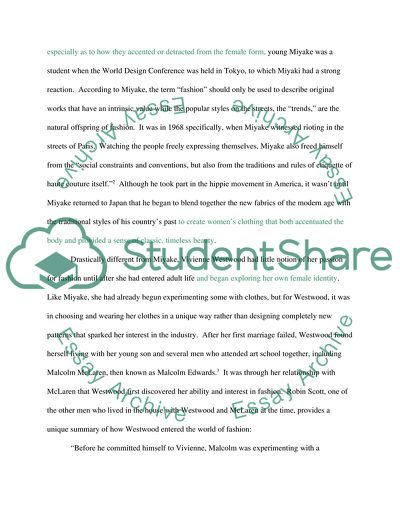Cite this document
(“How and Why Do Issey Miyake and Vivienne Westwood Display the Female Essay”, n.d.)
How and Why Do Issey Miyake and Vivienne Westwood Display the Female Essay. Retrieved from https://studentshare.org/gender-sexual-studies/1535496-how-and-why-do-issey-miyake-and-vivienne-westwood-display-the-female-body-clothing
How and Why Do Issey Miyake and Vivienne Westwood Display the Female Essay. Retrieved from https://studentshare.org/gender-sexual-studies/1535496-how-and-why-do-issey-miyake-and-vivienne-westwood-display-the-female-body-clothing
(How and Why Do Issey Miyake and Vivienne Westwood Display the Female Essay)
How and Why Do Issey Miyake and Vivienne Westwood Display the Female Essay. https://studentshare.org/gender-sexual-studies/1535496-how-and-why-do-issey-miyake-and-vivienne-westwood-display-the-female-body-clothing.
How and Why Do Issey Miyake and Vivienne Westwood Display the Female Essay. https://studentshare.org/gender-sexual-studies/1535496-how-and-why-do-issey-miyake-and-vivienne-westwood-display-the-female-body-clothing.
“How and Why Do Issey Miyake and Vivienne Westwood Display the Female Essay”, n.d. https://studentshare.org/gender-sexual-studies/1535496-how-and-why-do-issey-miyake-and-vivienne-westwood-display-the-female-body-clothing.


